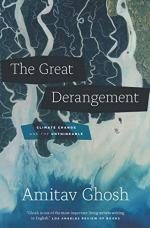
|
| Name: _________________________ | Period: ___________________ |
This quiz consists of 5 multiple choice and 5 short answer questions through Part I, Section 15 - Part II, Section 4.
Multiple Choice Questions
1. How many were killed by the cyclone that the author describes encountering in Delhi in Part 1, Section 5?
(a) 22.
(b) 30.
(c) 65.
(d) 59.
2. Where is Adam Sobel a professor of atmospheric science?
(a) Princeton University.
(b) Columbia University.
(c) Yale University.
(d) Howard University.
3. The Bengal Delta is formed by the confluence of what rivers?
(a) The Feni and the Ganges.
(b) The Muhuri and the Padma.
(c) The Ganges and the Brahmaputra.
(d) The Meghna and the Ganges.
4. What author did Lionel Trilling famously dismiss as one who thought "like a social function, not a novelist" (79-80)?
(a) Franco Moretti.
(b) Stanislaw Lem.
(c) Ian Hacking.
(d) John Steinbeck.
5. Who wrote of the genres of science fiction and speculative fiction that they "all draw from the same deep well: those imagined other worlds located somewhere apart from our everyday one..." (72)?
(a) Stanislaw Lem.
(b) Margaret Atwood.
(c) Ian Hacking.
(d) Ernest Gellner.
Short Answer Questions
1. Who wrote the sonnet "The World Is Too Much With Us"?
2. Who wrote "Surely Descartes never saw an ape" (64)?
3. The death toll of the 1882 Bombay cyclone was said to be upward of what number, according to the initial articles examined by the author in Part 1, Section 10?
4. How did the tsunami's actions respond to the system of military rank in how it hit the Nicobar Islands?
5. The author concludes Part 1, Section 14 with the following: "So, if for a moment, we were to take seriously the premise that I started with--that the Anthropocene has forced us to recognize that there are other, fully aware eyes looking over our shoulders--the the first question to present itself is this" (66). What is the question he poses next?
|
This section contains 311 words (approx. 2 pages at 300 words per page) |

|




